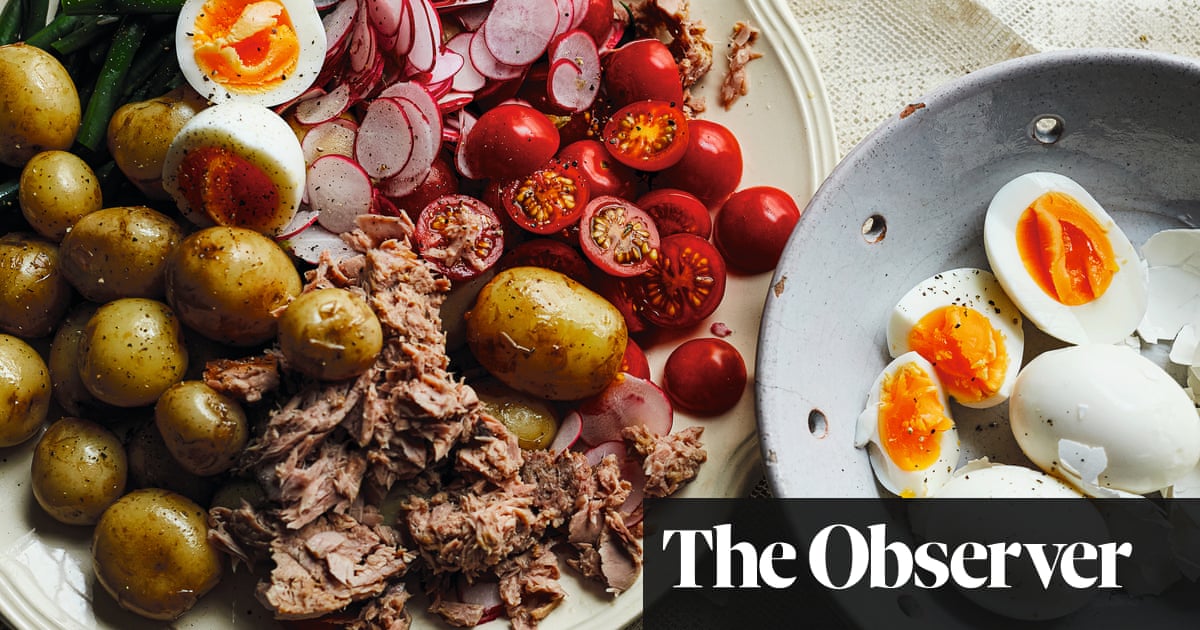
elma Bongenaar is an original. Her belief that “it is not necessary to buy new things” comes from a passion for old crafts and her reasoning that there are plenty of abandoned materials that can be reused. “We do not have a lot of money, but we do have grand taste, so we look for affordable and practical solutions,” she says. “We love to skip-dive, which mortified our children when they were young.”
Step into Bongenaar’s building on the corner of a stylish street in the eastern docklands of Amsterdam, past chic Scandi clothing stores, cheese and coffee shops and an obligatory brown café, and you will find a home designed from other people’s debris and secondhand finds.
Her kitchen is painted in serene blues, with stripped wooden floorboards and, above the table, a unique chandelier. It was made by Bongenaar from several she found on the street – “They were out of fashion and tossed out” – to which she added hanging pottery spoons. “I love to recreate new things out of old things.” Mismatched antique chairs from French brocantés sit round a table covered in a secondhand linen tablecloth, while piles of antique plates, Victorian French glasses, polished candlesticks and embroidered napkins found in junk shops and flea markets are carefully arranged ready for a feast.
“We care how things are made,” says Bongenaar, describing her interiors. The kitchen cabinets have been recreated from old doors rescued from building sites or skips. “We always ask if we can take them.” Her husband, Jeroen Alberts, is an artist and partner in a theatre group named Delinus. He’s also a carpenter and he built the cabinets, adding the handles, which were once brass stair carpet rods. “We both love craftsmanship and attention to details. We feel so much of that is lost these days, so much is mass-produced. We like that each panel and cabinet is individual. It is time consuming to use old wood, getting the nails out, nothing is the right size. But we appreciate it far more in the end.”
Built in 1880, their home was originally a bar for dockers, and has been a café and shop in the years since then, but when Bongenaar and Alberts found it 23 years ago, it was a government-subsidised home for artists.
Inside, their ceilings are inspired by the grand Dutch canal townhouses and have been painted to match each room and trimmed with brocade to create the classic oval shape. Curtains have been made from silk scarves that Bongenaar has collected over the years and the couple added an entrance hall, partitioned by a pair of obsolete school doors – the handle created from an old lamp stand pole. To generate extra light in winter the couple added window frames made from vintage mirrors and fitted with glass.
The sitting-room ceiling is made of old armoire panels, the wallpapers are from an old shop in Ghent that sells original 50s, 60s and 70s paper, and the entire room is painted in shades of green. Its seven glass doors were given by friends in return for a seven-course meal, while the fireplace mural was painted by Bongenaar herself. “I would love a real fireplace, but it is not possible, so I made it my own way.”
Their children ate only from antique plates – “Yes, they broke some, but I would rather they ate from china than plastic” – and no, there is no dishwasher, and yes, everything is handwashed.
Bongenaar’s own childhood was shaped by her parents’ love of antiquity. Her father collected 17th- and 18th-century technical books and taught Bongenaar electrical work when she was 10 – she still makes her own lamps. Her mother was obsessed with antique irons and chinaware and, as a family, (Bongenaar is the youngest of four) they spent many hours lost in flea markets and thrift stores in Belgium, France and Holland.
Pre-lockdown, Bongenaar worked as a stylist, but she is also the author of a cookery book, Aan Tafel bij Au Bon Coin, and used to host supperclubs, attended by artists and designers from all over the city. Her suppers were legendary not just for her spectacular food but for the care and attention she spent on the table decoration and the exquisite chinaware used. Her daughter recently left for university and Bongenaar’s parting gift was a set of silver cutlery. This month, she has launched a magazine, Sentimental Journal, dedicated to craftsmanship and collecting. “We want to show how beautiful made things are,” she says. “We want people to look at things differently.”












